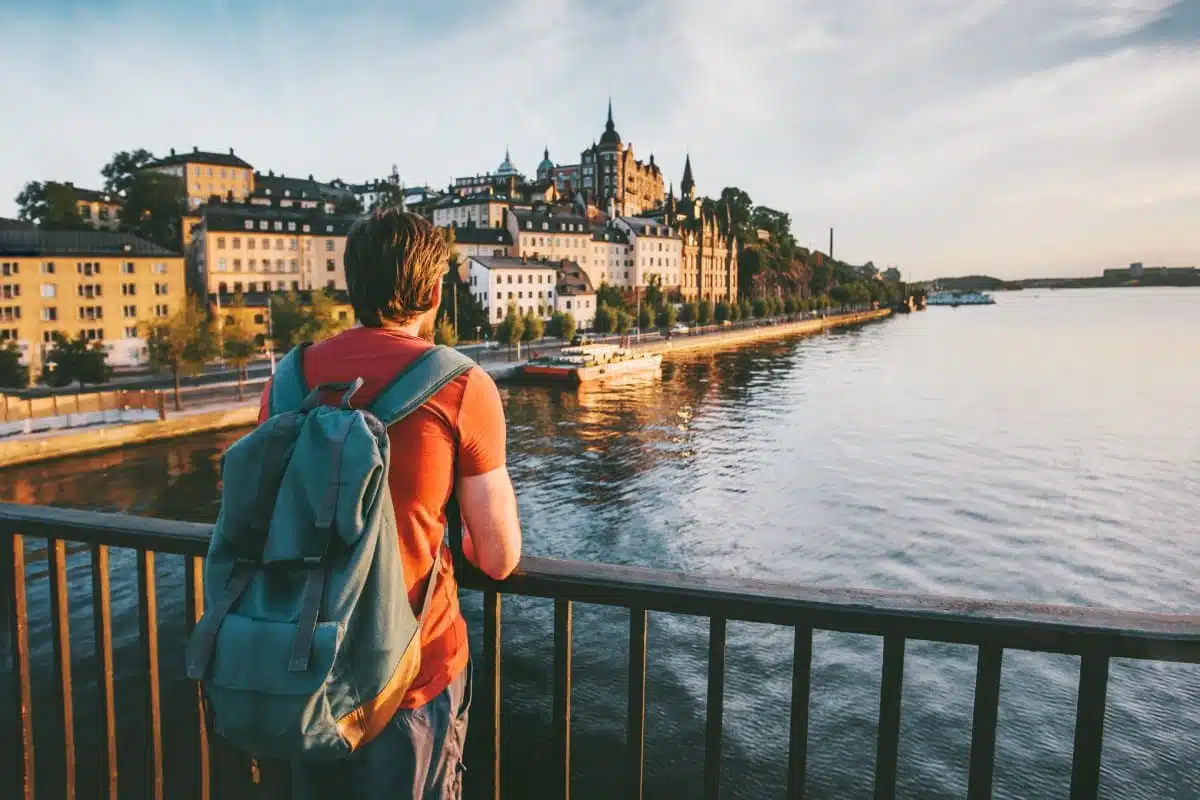Stockholm, the capital of Sweden, is a city where history and modernity meet against a backdrop of stunning natural beauty. Spread across 14 islands where Lake Mälaren flows into the Baltic Sea, the city is known for its clean and open waterways, beautiful architecture, and vibrant cultural scene. From the cobblestone streets of Gamla Stan to the serene landscapes of the Stockholm Archipelago, Stockholm offers a diverse array of experiences for every traveler.
This guide explores various points of interest, providing insights into each destination’s unique offerings, complemented by practical advice for visitors. Whether you’re a history buff, nature enthusiast, or culinary explorer, Stockholm’s rich heritage and contemporary dynamism await.
Stockholm effortlessly combines the allure of its medieval past with the innovation of its modern present.
The city invites exploration and discovery, from the historic heart of Gamla Stan to the cutting-edge designs of its museums and the tranquility of its natural surroundings. With a commitment to sustainability, Stockholm residents live harmoniously with nature. This guide provides a comprehensive look into Stockholm’s most captivating attractions, offering tips to navigate the city like a local while uncovering the beauty and intrigue of Sweden’s capital.
1. Gamla Stan (The Old Town)
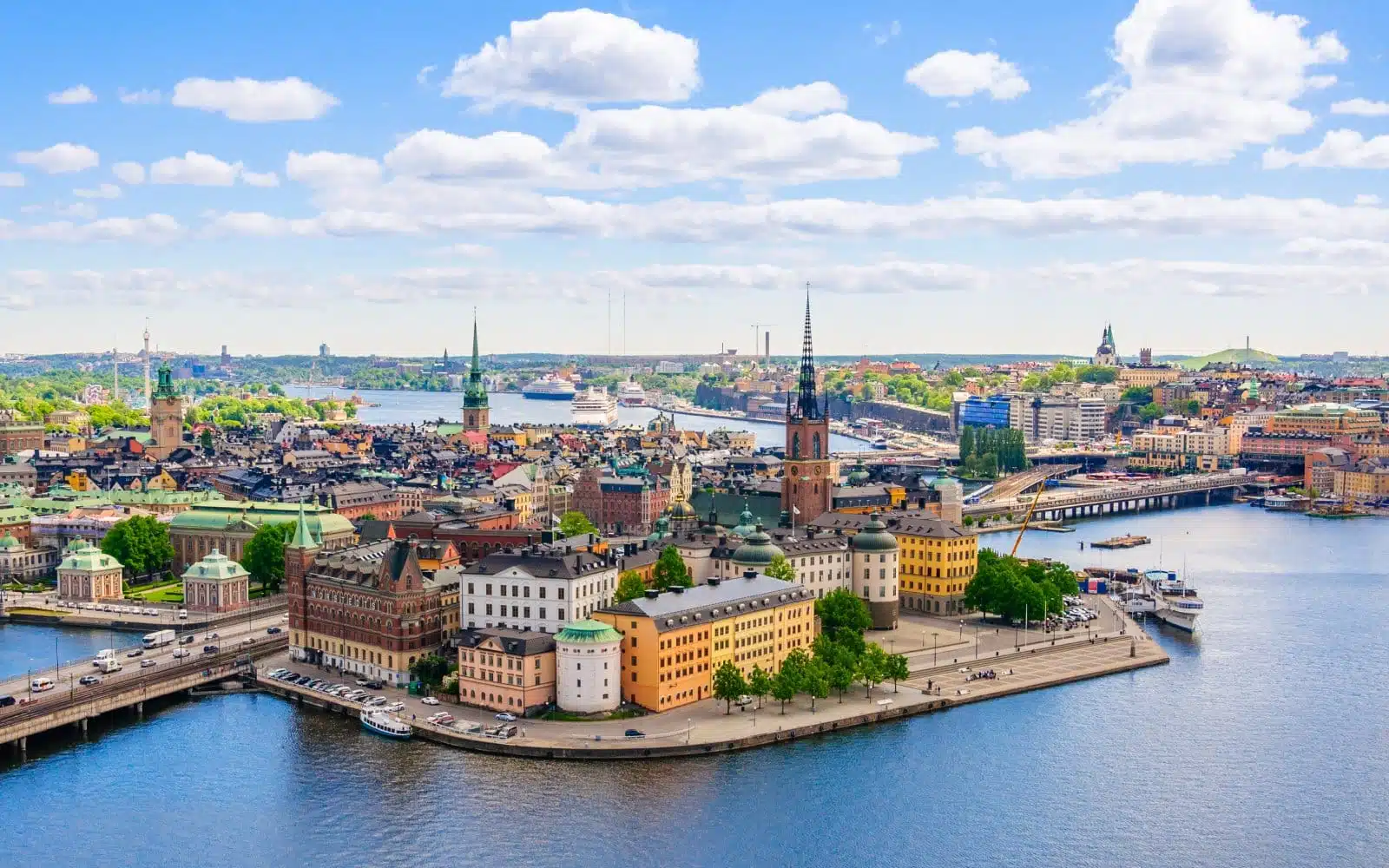
Image Credit: Shutterstock / Andrey Shcherbukhin
Gamla Stan, the historical heart of Stockholm, is a labyrinth of narrow medieval streets, ochre-colored buildings, and bustling squares. Dating back to the 13th century, this area is one of Europe’s best-preserved medieval city centers. The Royal Palace, Stockholm Cathedral, and the Nobel Museum are key attractions. Walking through Gamla Stan is like stepping back in time, with each alley and square telling its own story. The area is also home to numerous cafés, restaurants, and boutiques, offering a blend of historical ambiance and contemporary Swedish culture.
Insider’s Tip: Visit Gamla Stan early in the morning to experience its streets quietly and without the crowds. This time offers the best light for photography and a more intimate encounter with the city’s history.
When to Travel: Gamla Stan is enchanting year-round, but visiting during the late spring to early fall offers warmer weather and longer days to explore.
How to Get There: Easily accessible by foot from central Stockholm, Gamla Stan is also well-connected by the metro, with Gamla Stan station serving as the main stop for the area.
2. Vasa Museum

Image Credit: Shutterstock / Willem Tims
The Vasa Museum on Djurgården Island houses the Vasa Ship, which tragically sank on its maiden voyage in 1628 and was salvaged in remarkably preserved condition in 1961. The museum offers a fascinating glimpse into 17th-century maritime life, showcasing the ship itself as the centerpiece. Exhibits around the Vasa provide insights into its construction, ill-fated voyage, and extensive efforts to recover and preserve the vessel. The museum is not just about the ship but also tells the stories of the people onboard and the historical context of Sweden’s great power period.
Insider’s Tip: Don’t miss the guided tour, available in multiple languages and provides deeper insights into the ship’s history and the archaeological processes involved in its preservation.
When to Travel: The Vasa Museum is open year-round, but visiting during the off-peak season (late autumn to early spring) can mean fewer crowds and a more leisurely museum experience.
How to Get There: The museum is located on Djurgården Island, easily accessible by bus, tram, or ferry from central Stockholm. Walking or biking to Djurgården via Strandvägen offers scenic views along the way.
3. Skansen Open-Air Museum
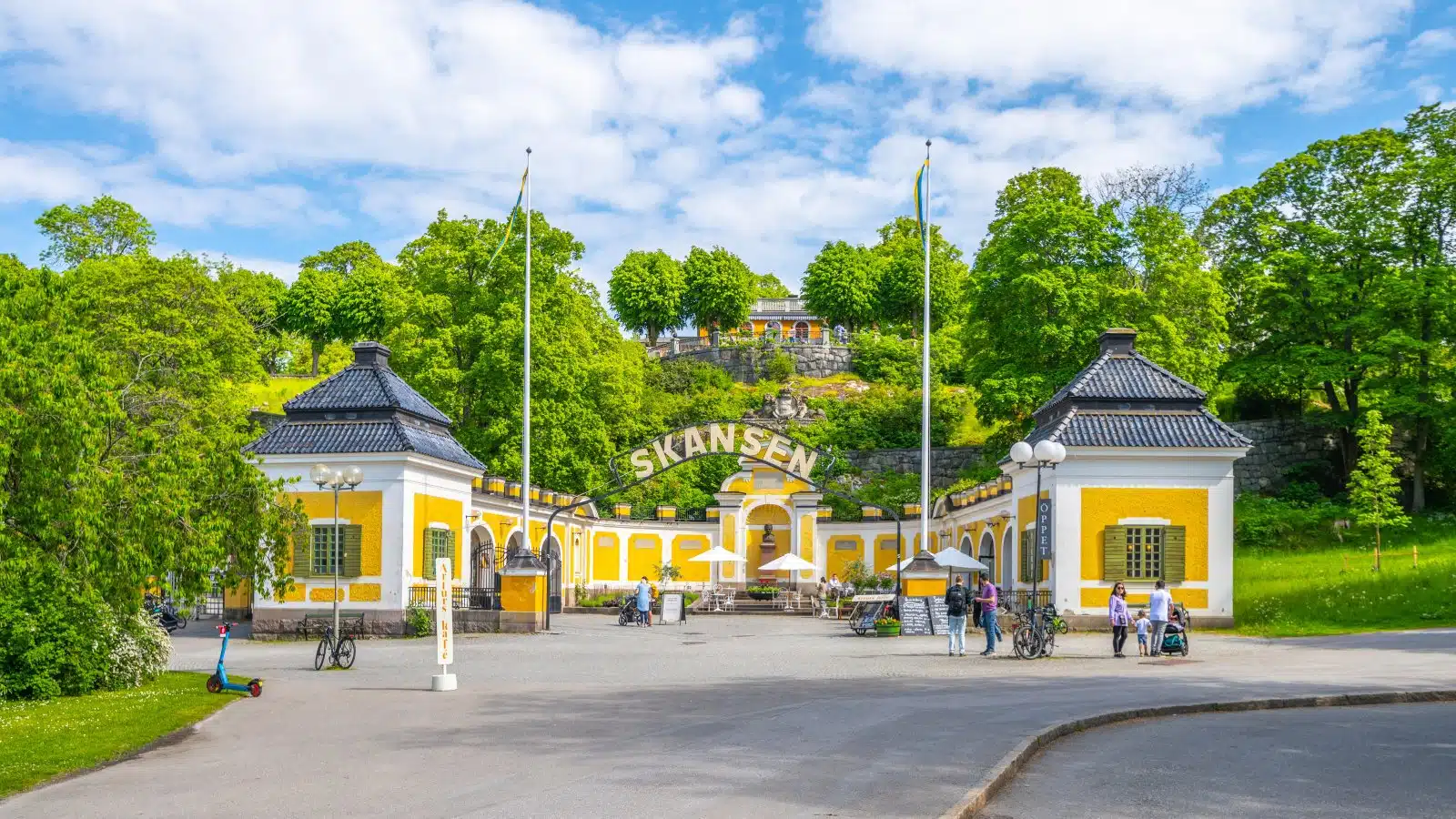
Image Credit: Shutterstock / Pyty
Skansen, the world’s first open-air museum, founded in 1891, offers a unique journey through Sweden’s past. Located on Djurgården Island, it showcases over 150 traditional houses and other historical buildings from across the country, transported here to recreate Swedish life before the industrial era. Visitors can explore homes, farms, and workshops where artisans demonstrate traditional crafts like glassblowing and pottery. Skansen is also a zoological park featuring Nordic animals such as wolves, bears, and reindeer. The museum hosts various seasonal festivals and events, providing insights into Swedish traditions and celebrations.
Insider’s Tip: Plan your visit to coincide with one of Skansen’s seasonal festivals, such as the Midsummer celebration or the Christmas market, for a deeper cultural experience.
When to Travel: Skansen is captivating year-round, but visiting in the summer allows you to enjoy the museum’s lush gardens and outdoor activities in pleasant weather.
How to Get There: Skansen is accessible by bus, tram, or ferry from central Stockholm. Walking from the city center offers a scenic route along the waterfront.
4. Stockholm Archipelago
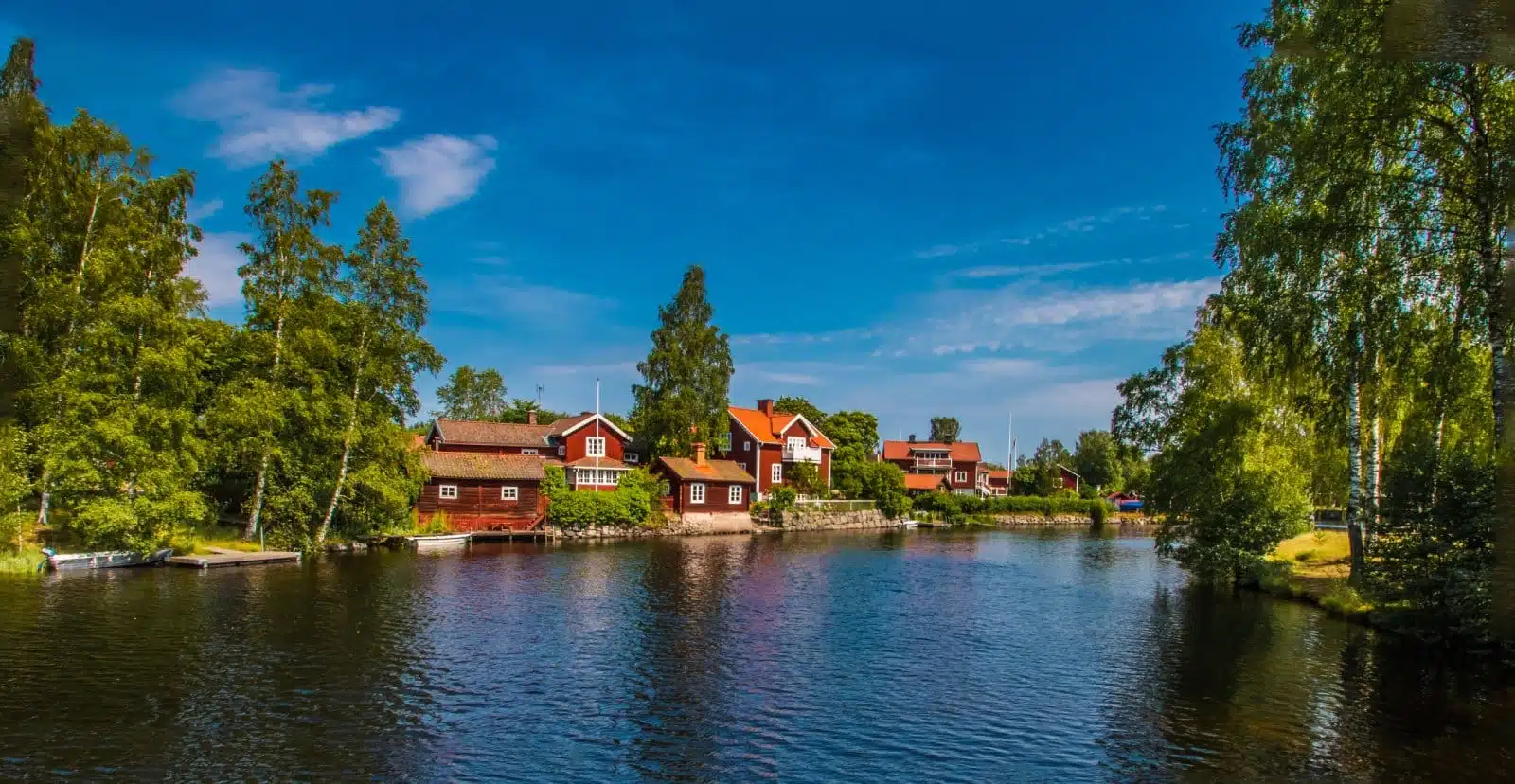
Image Credit: Shutterstock / Margit Kluthke
The Stockholm Archipelago offers an escape into nature’s tranquility with its 30,000 islands, islets, and rocks. From sandy beaches to rocky shores and forested islands, the archipelago provides a plethora of outdoor activities, including kayaking, sailing, and hiking. Many islands, such as Vaxholm, Grinda, and Sandhamn, are popular destinations with quaint villages, local restaurants, and guesthouses. The archipelago’s beauty is its diversity, offering something for every type of traveler, whether seeking adventure, relaxation, or cultural experiences.
Insider’s Tip: Renting a kayak or booking a guided tour allows you to explore the more secluded parts of the archipelago and discover its hidden gems.
When to Travel: The best time to visit the archipelago is from late spring to early autumn when the weather is warm, and most services and accommodations are open.
How to Get There: Ferries to the major islands depart from Stockholm’s Strömkajen and Slussen. The Waxholmsbolaget ferry service provides extensive routes and schedules to various islands.
5. Moderna Museet
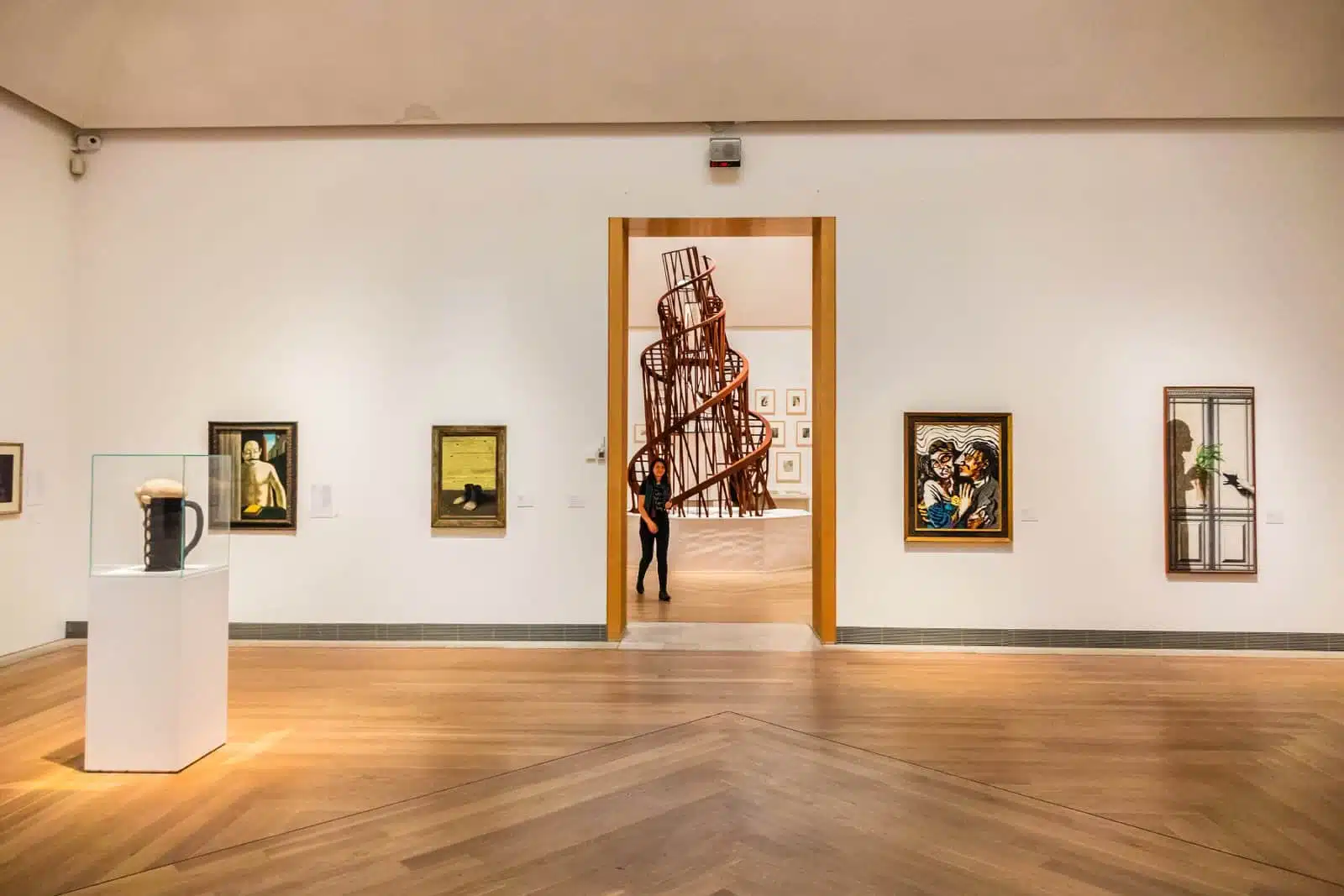
Image Credit: Shutterstock / Kiev.Victor
Moderna Museet, located on Skeppsholmen Island, is Stockholm’s premier modern and contemporary art museum. It boasts an impressive collection of works from the 20th and 21st centuries, including pieces by Picasso, Dali, and Warhol, alongside Swedish and Nordic artists. The museum also features temporary exhibitions showcasing the latest in contemporary art. The building itself, designed by Spanish architect Rafael Moneo, is a modern architectural landmark, offering stunning views of Djurgården and the surrounding waters.
Insider’s Tip: Admission to the museum’s permanent collection is free. Check the museum’s calendar for special exhibitions and public programs, often including artist talks and workshops.
When to Travel: The museum is open year-round, but visiting on a weekday avoids the weekend crowds.
How to Get There: Moderna Museet is accessible by foot, bus, or ferry. The scenic walk from central Stockholm across the Skeppsholmen Bridge offers beautiful views of the city.
6. The Royal National City Park
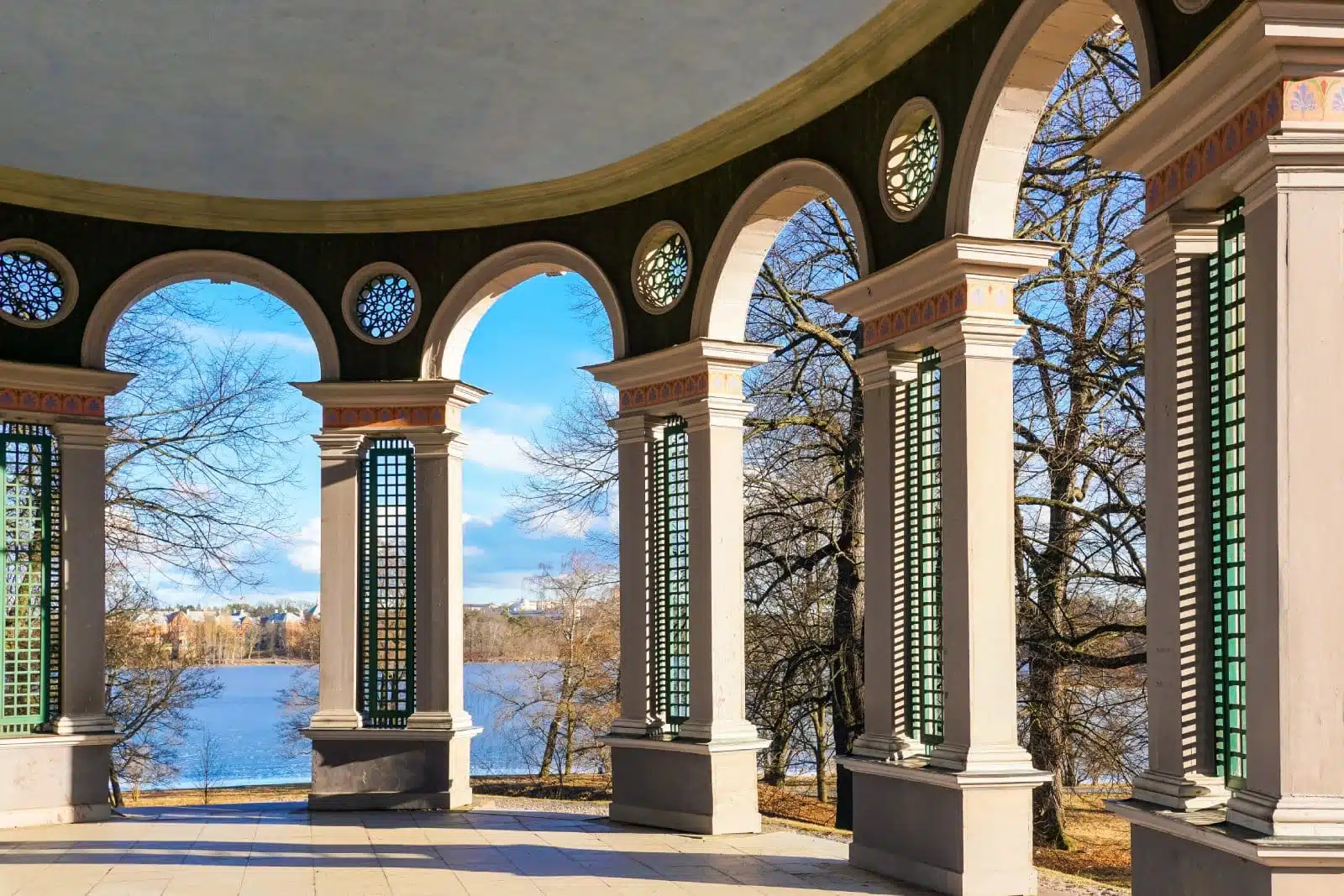
Image Credit: Shutterstock / alljoh
The Royal National City Park, the world’s first national urban park, spans Djurgården, Gärdet, and the northern parts of Stockholm. This green oasis in the city offers a mix of natural landscapes, historical sites, and cultural attractions. Visitors can enjoy a range of activities, from leisurely walks and picnics to bird watching and museum visits. The park is home to several of Stockholm’s top attractions, including Skansen, Rosendal Palace, and the Stockholm University campus, making it a perfect destination for relaxation and exploration.
Insider’s Tip: Renting a bike is an excellent way to cover more ground within the park, allowing you to visit multiple attractions in a single day.
When to Travel: Spring through autumn offers the best weather for enjoying the park’s outdoor activities, though its landscapes are also stunning in winter snow.
How to Get There: The park is easily reachable from anywhere in central Stockholm by bus, bike, or on foot, with several entrances leading into its different areas.
7. ABBA The Museum
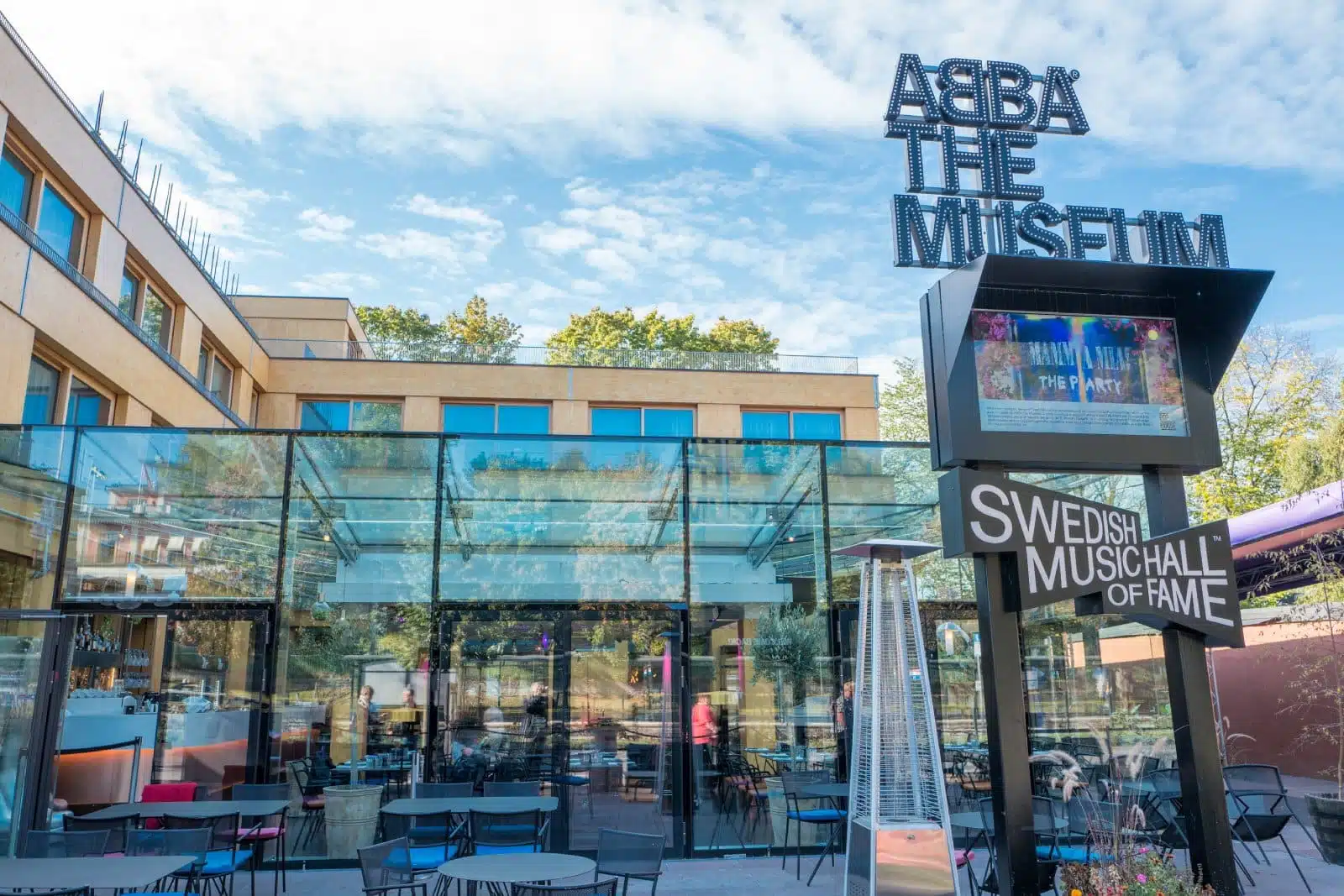
Image Credit: Shutterstock / Rolf_52
ABBA The Museum, not just a museum but an interactive experience located on Djurgården Island, celebrates the music, history, and legacy of Sweden’s most famous pop group, ABBA. Visitors can sing along to their hits in a karaoke booth, mix original music, try on virtual costumes, and even take the stage with holograms of the band. The museum also features personal items, stage outfits, and memorabilia, offering an insight into the band’s journey to international stardom.
Insider’s Tip: Book your tickets online to secure your entry time and avoid the queues, especially during peak tourist season.
When to Travel: ABBA The Museum is a great year-round visit, but weekdays outside school holidays typically see fewer visitors.
How to Get There: The museum is located in Djurgården and is accessible by tram, bus, or ferry from central Stockholm, making it easy to combine with visits to other nearby attractions.
8. Fotografiska
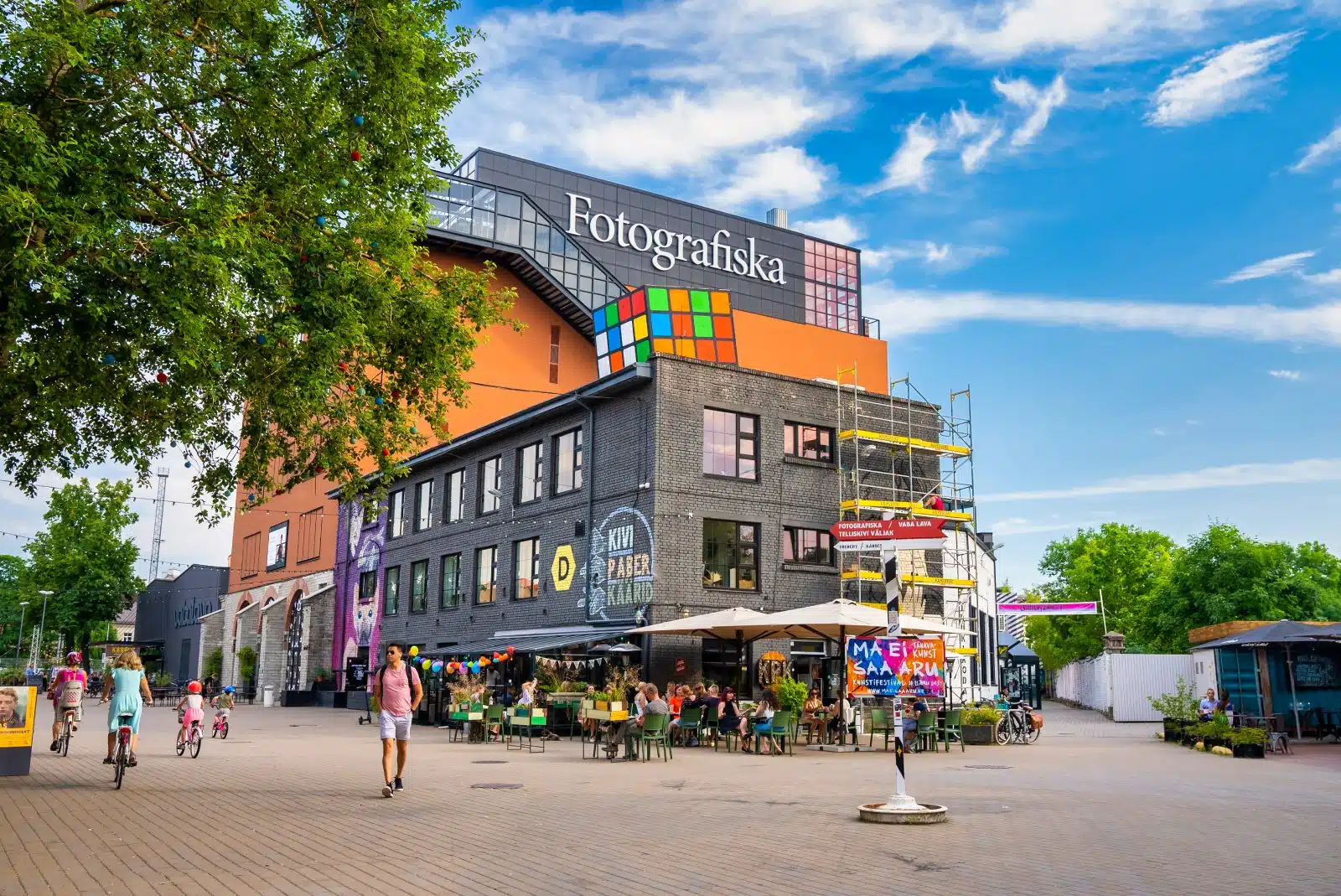
Image Credit: Shutterstock / Pandora Pictures
Fotografiska, Stockholm’s center for contemporary photography, is housed in an Art Nouveau building on the shores of Södermalm. It hosts an impressive exhibition rotation featuring work from world-renowned photographers and emerging talents. Beyond its exhibitions, Fotografiska is known for its commitment to sustainability, particularly in its award-winning restaurant, which focuses on organic and locally sourced ingredients. The museum’s location also offers one of the city’s best views, overlooking the water and city skyline.
Insider’s Tip: Visit the museum in the evening to enjoy the view from the top-floor restaurant or café, which is particularly stunning at sunset.
When to Travel: Fotografiska is open all year, with extended hours on weekends, making it a flexible option for both early birds and night owls.
How to Get There: Located in Stadsgården, Fotografiska is accessible by bus or a pleasant walk from Slussen, offering a scenic route along the waterfront.
9. Drottningholm Palace
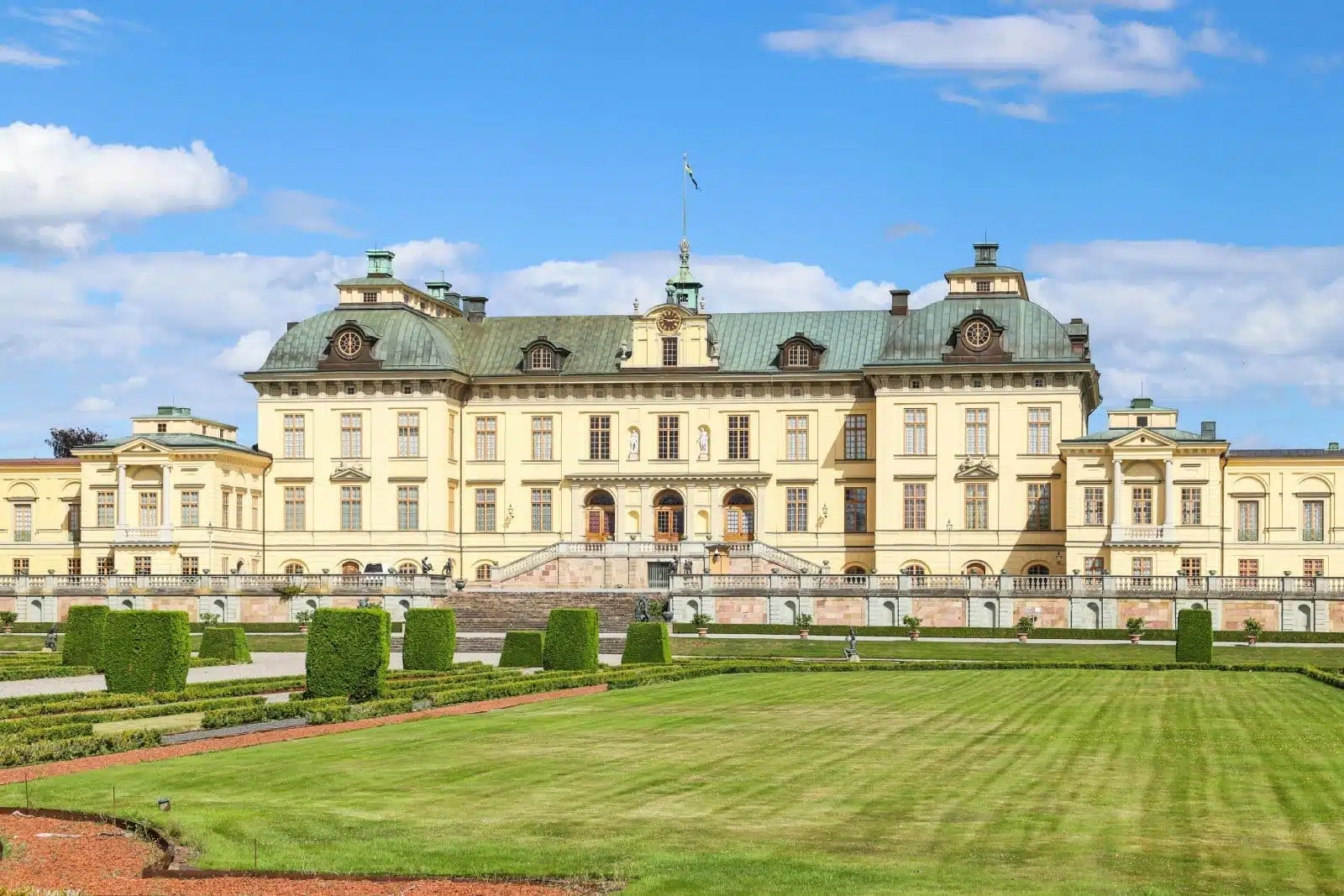
Image Credit: Pexels / Michael Erhardsson
Situated on the island of Lovön, Drottningholm Palace is the private residence of the Swedish royal family and a UNESCO World Heritage Site. The palace dates back to the 16th century. It is an exquisite example of European architecture and design, featuring a stunning palace theater, a Chinese Pavilion, and magnificent gardens. The palace theater, still operational with its original 18th-century machinery, hosts performances using traditional stagecraft. The gardens, inspired by Versailles, are ideal for leisurely walks, showcasing baroque and English styles.
Insider’s Tip: Attend a performance at the Drottningholm Court Theatre to experience opera in an authentic historical setting, complete with period costume and stage machinery.
When to Travel: The palace and theater are open to visitors from May to September, offering the best weather for exploring the gardens.
How to Get There: Drottningholm is accessible by public bus from central Stockholm or by boat from Stadshuskajen, offering a scenic route along Lake Mälaren.
10. Kungsträdgården
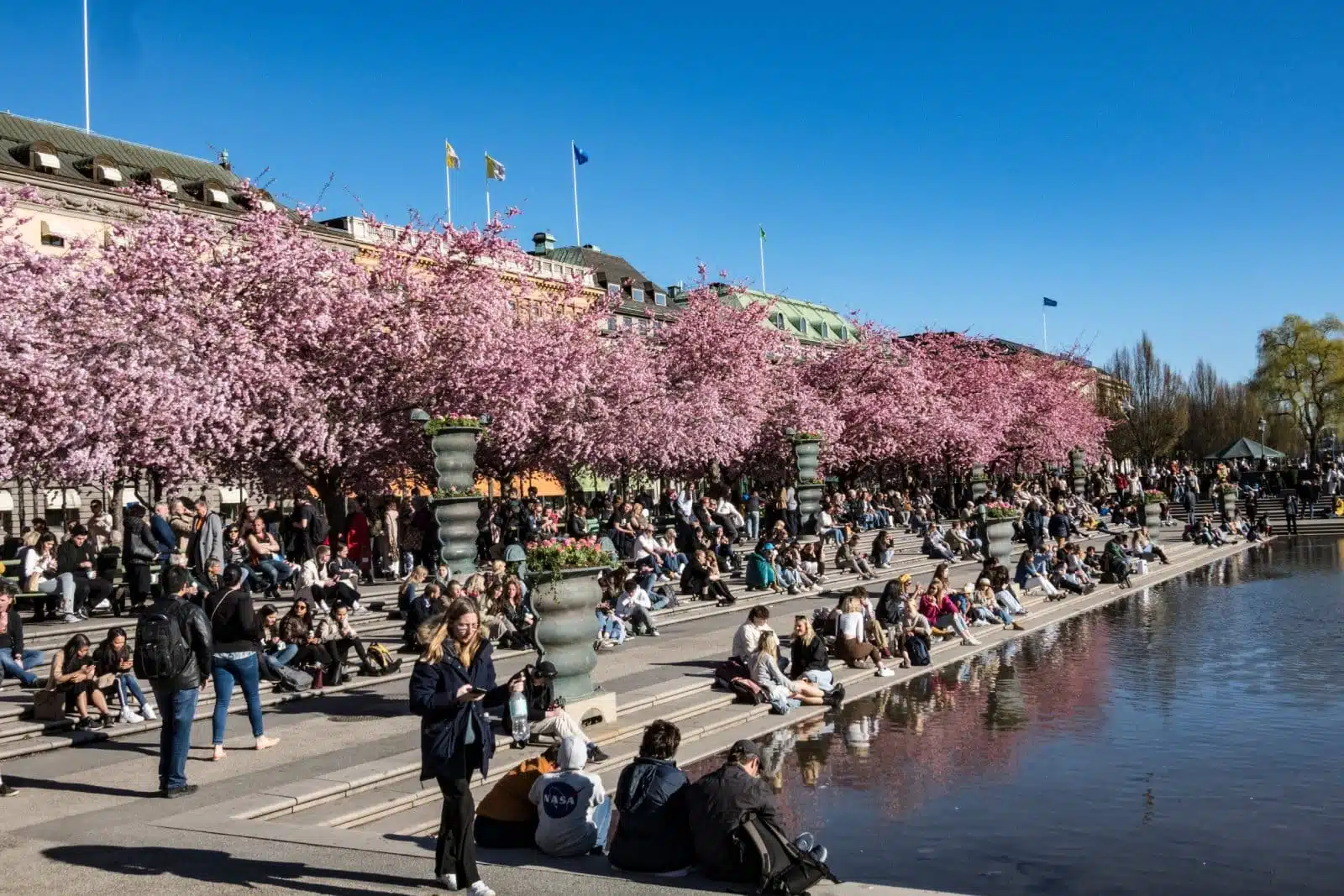
Image Credit: Shutterstock / Alexanderstock23
Kungsträdgården, or “The King’s Garden,” is a vibrant urban park in Stockholm. It’s a popular gathering place for locals and tourists, offering various activities and events throughout the year, including concerts, outdoor exhibitions, and food festivals. The park is also known for its beautiful cherry blossoms in spring, transforming it into a pink-hued wonderland. Kungsträdgården’s central location makes it an ideal spot for relaxation and people-watching, surrounded by historical buildings and bustling city life.
Insider’s Tip: Plan your visit in April to experience the cherry blossom season, which attracts photographers and picnickers alike.
When to Travel: Spring and summer offer the most events and pleasant weather for outdoor activities year-round.
How to Get There: Located centrally, Kungsträdgården is easily reached by Stockholm’s metro, with its own station named after the park and by foot from many central locations.
11. Monteliusvägen
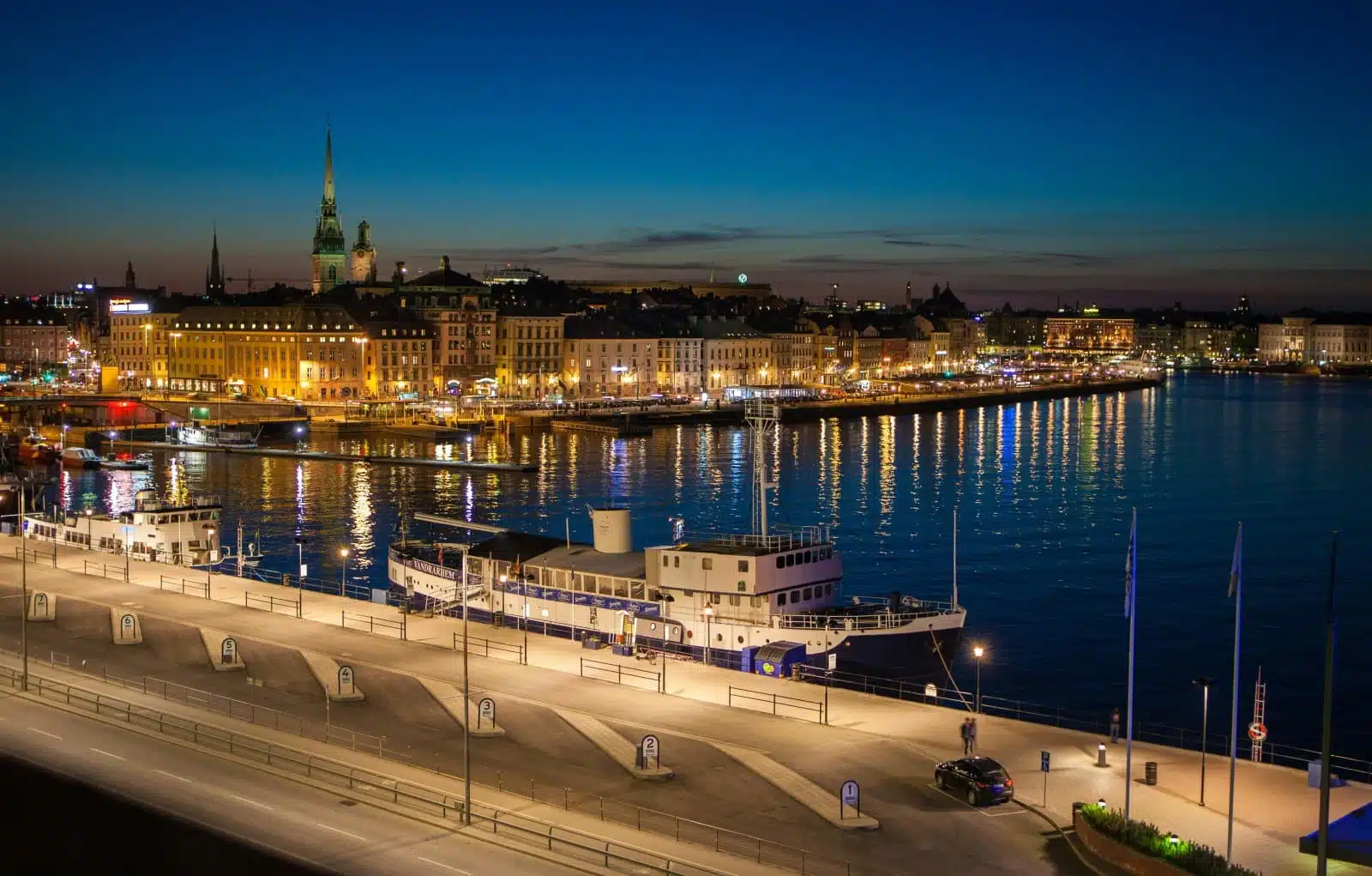
Image Credit: Pexels / Lars H Knudsen
Monteliusvägen is a scenic walking path along the cliffs of Södermalm, offering one of the best views of Stockholm’s cityscape, including the City Hall, Riddarholmen, and Gamla Stan. The path, about 500 meters long, is lined with charming houses and greenery, making it a peaceful escape from the city bustle. It’s especially popular at sunrise and sunset when the city is bathed in golden light.
Insider’s Tip: Bring a camera or smartphone with a good camera; the views from Monteliusvägen are among the most photographed in Stockholm, especially at sunset.
When to Travel: Accessible year-round, the path offers different experiences each season, from snowy landscapes in winter to lush greenery in summer.
How to Get There: Monteliusvägen is within walking distance from the Slussen metro station, easily incorporated into a walking tour of Södermalm.
12. Rosendals Trädgård
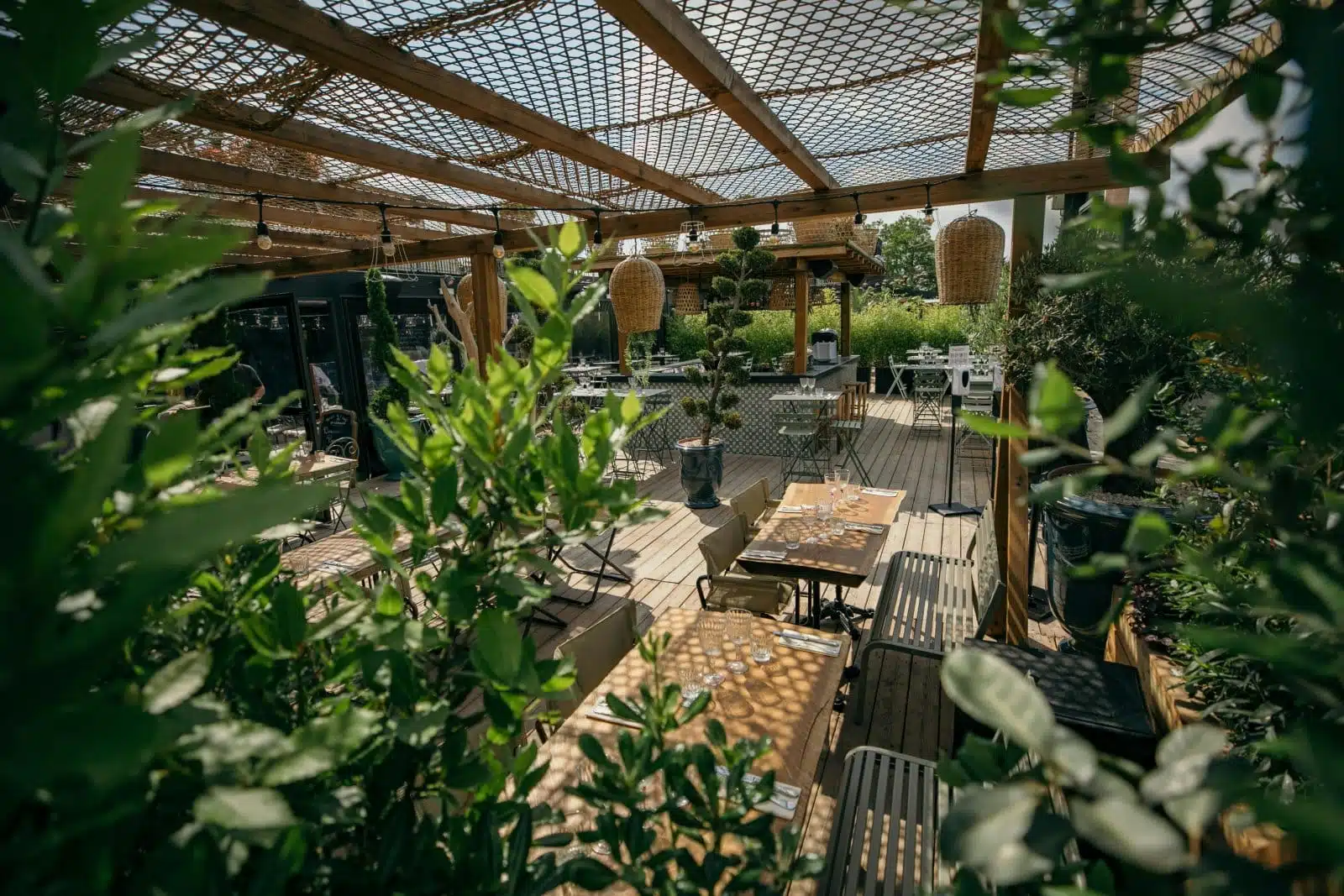
Image Credit: Pexels / Kelian Pfteger
Rosendals Trädgård is a garden oasis on Djurgården Island, focusing on organic gardening and sustainable practices. Visitors can explore the vegetable fields, orchards, and greenhouses or enjoy fresh-baked goods from the garden café. The garden also operates a shop selling plants and garden-related products, all produced organically on-site. Rosendals is a place to relax and an educational resource on organic farming and sustainability.
Insider’s Tip: Enjoy lunch at the garden café, where all ingredients are sourced from the garden or nearby organic farms, for a true farm-to-table experience.
When to Travel: Open from February to December, the best time to visit is May to September when the garden is in full bloom and the café and shop are open.
How to Get There: Rosendals Trädgård is a short bus ride from the city center, a pleasant bike ride, or a walk from other parts of Djurgården.
13. The Stockholm Subway Art Tour

Image Credit: Pexels / Max Avans
Often referred to as the world’s longest art gallery, the Stockholm subway system is adorned with paintings, mosaics, sculptures, and installations by over 150 artists. Spanning across more than 90 of the 100 subway stations, the art showcases various themes from Sweden’s history and culture to social and environmental issues. A guided art tour through these subterranean galleries offers a unique perspective on Stockholm’s artistic and cultural heritage.
Insider’s Tip: The most impressive stations to visit include T-Centralen, Stadion, and Solna Centrum. Consider purchasing a day pass for unlimited metro rides to explore.
When to Travel: The subway art is accessible year-round, making it a perfect activity for any weather condition.
How to Get There: Start your tour at T-Centralen, the central hub of Stockholm’s subway, easily reachable from anywhere in the city.
14. Södermalm’s Vintage and Second-Hand Shops
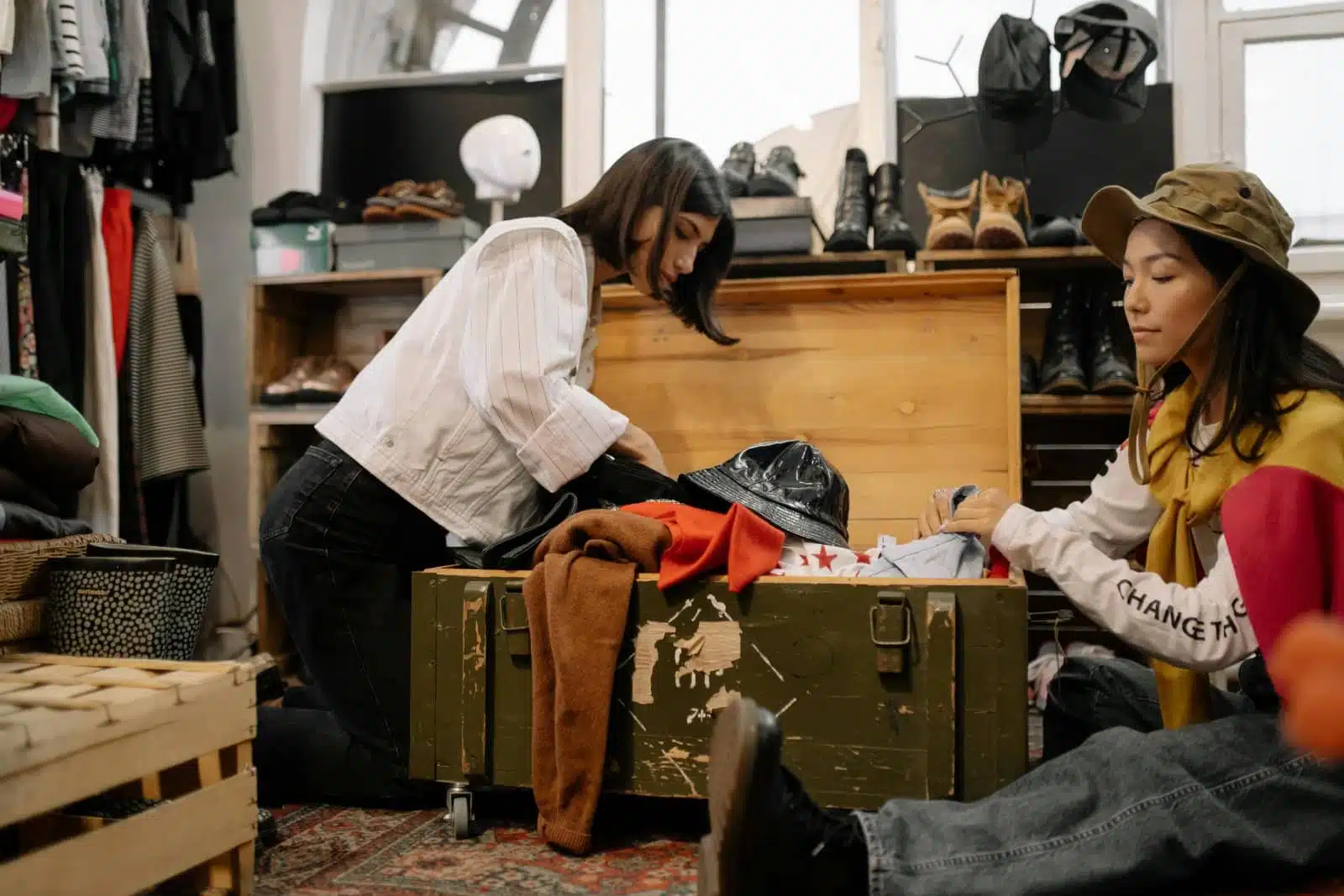
Image Credit: Pexels / cottonbro studio
Södermalm, often referred to as Stockholm’s hipster district, is renowned for its vintage and second-hand shops. These stores offer everything from clothing and accessories to furniture and home decor, emphasizing sustainability and unique finds. Exploring Södermalm’s vintage scene is a way to shop eco-consciously and discover the area’s creative and bohemian vibe.
Insider’s Tip: Visit on weekends when many shops host outdoor stalls or special sales, and don’t be afraid to haggle, as it’s often expected for second-hand items.
When to Travel: Year-round, though spring and summer, offer the most pleasant weather for wandering the district’s streets and outdoor markets.
How to Get There: Södermalm is accessible by metro, bus, or on foot from central Stockholm, with several stations and stops throughout the district.
15. Fika Culture in Stockholm’s Cafés
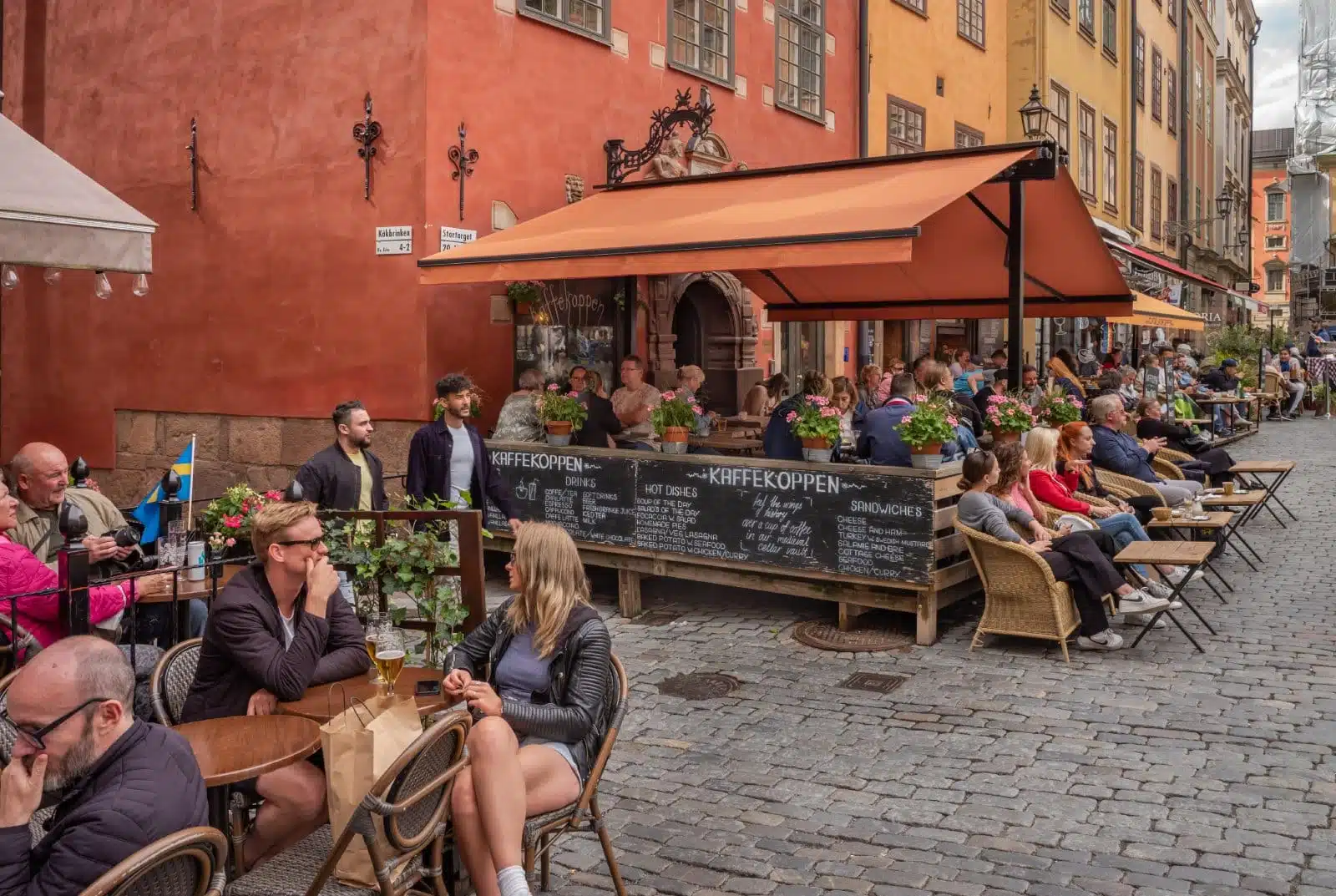
Image Credit: Shutterstock / Boris-B
Fika, the Swedish custom of taking a break for coffee and a sweet treat, is an integral part of daily life in Stockholm. The city boasts numerous cafés where locals and visitors alike can enjoy this tradition. From historic establishments to modern, specialty coffee shops, each offers a unique setting for experiencing fika. Beyond coffee, these cafés often serve as cultural hubs, hosting events, exhibitions, and performances.
Insider’s Tip: Explore beyond the city center to find some of Stockholm’s most charming and less crowded cafés, where the fika experience can be enjoyed at a leisurely pace.
When to Travel: Fika can be enjoyed year-round, with cozy indoor settings for winter and outdoor seating to take advantage of Stockholm’s long summer days.
How to Get There: Stockholm’s cafés are spread throughout the city, easily accessible on foot, by bike, or by public transportation, making them a convenient and enjoyable stop in any travel itinerary.
The Bottom Line

Image Credit: Pexels / Gianna P1
Stockholm presents many experiences that blend its historical legacy with contemporary lifestyle, all within a sustainability and environmental consciousness framework. From the cobblestone alleys of Gamla Stan to the tranquil greenery of the Royal National City Park and the artistic expressions found in subway stations, the city offers endless opportunities for exploration and discovery. You’re invited to embrace the Swedish ethos of balance and sustainability as you navigate through Stockholm’s streets and waterways, engage with its culture, and partake in the local customs.
More From The Green Voyage
Top 10 Trending Travel Destinations 2024
6 Essential Banking Apps for International Travel – Managing Your Finances on the Go
Traveling With Kids – 10 Tips to Create Memorable Family Holidays
The post A City Guide to Stockholm, Sweden first appeared on The Green Voyage.
Featured Image Credit: Shutterstock / everst.
For transparency, this content was partly developed with AI assistance and carefully curated by an experienced editor to be informative and ensure accuracy.
